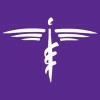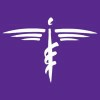
When news of the May 20 tornado that devastated Moore, OK, came across his pager, Tom Wicks, D.P.M.’94, began “climbing the walls,” eager to help. The podiatric physician in Chickasha, OK, is also a volunteer firefighter and chief medical officer of the state’s third-largest fire department and largest volunteer department.
The massive tornado and its 200-plus mile-per-hour peak winds killed 24 people, injured hundreds and destroyed or damaged more than 12,000 homes. The nation’s deadliest since the Joplin, MO, tornado that killed 158 people in 2011, it also took out Moore’s power and water.
“None of the city’s 2,500 fire hydrants worked, so we were the water supply,” says Wicks, who arrived with his crew around 9 p.m., approximately six hours after the tornado struck. He and his staff also performed search and rescue at homes and Plaza Towers Elementary School, where seven third-graders died.
“The cadaver dogs had already been through, but there were sections of the school where they couldn’t get into deep enough. So that was our job – to pull off drywall using a skidloader,” Wicks says. “I felt blessed when I saw shoes with no feet in them.”
He and his fellow firefighters also assisted people getting from their homes to temporary shelters. He saved a lizard that was the pet of an eight-year-old girl who was a Plaza Towers student.
“Here was this shell-shocked kid. We piled the whole family into the truck and drove them about five miles to where they could stay safely,” he says. “After the tornado, it was raining and miserable. Relocating families was the most rewarding.”

“People were so thankful they were alive. They’d say, ‘This is just stuff. We can rebuild this,’” he says. “They were so happy to find photos of their kids and families. You learn pretty quick what’s most important to you.”

